Celebrating the legacy of the Darent Valley Landscape Partnership Scheme
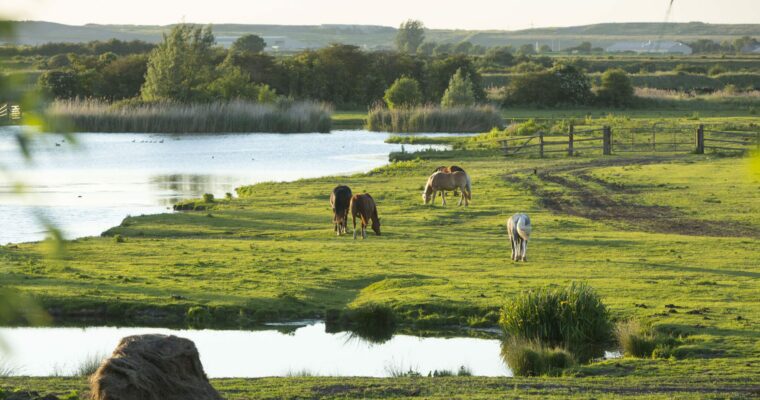
7th May 2025
Just 15 kilometres from the hustle and bustle of London lies the Darent Valley, a place rich in nature and history. With its rolling hills, meandering rivers, and picturesque villages, it feels like a world away. Over the last seven years, the Darent Valley Landscape Partnership Scheme (DVLPS) has helped bring out the best in the valley — with more than £5 million in funding from National Lottery Heritage, DEFRA, and 13 partner organisations.
As the partnership scheme comes to a close, we’re looking back and celebrating what’s been achieved. From protecting rare wildlife and restoring historic sites to getting thousands of people involved in the life of the valley, the DVLPS has made a real difference and left a lasting legacy.
Restoring the valley’s natural heritage
The Darent Valley Landscape Partnership Scheme (DVLPS) partners, Kent Wildlife Trust and the North West Kent Countryside Partnership, have made significant strides in restoring the valley’s chalk grasslands, a habitat of international importance due to its rarity and biodiversity. These grasslands, predominantly found on the steep slopes from Kemsing to Eynsford and Polhill to Shoreham, have been revitalised through targeted conservation efforts.
A key component of this restoration has been the implementation of conservation grazing. By introducing grazing animals, such as feral goats, to areas like Preston Hill, the DVLPS has effectively managed scrub encroachment, allowing native flora and fauna to flourish once more.
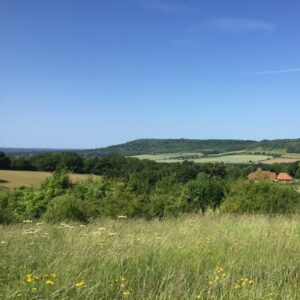
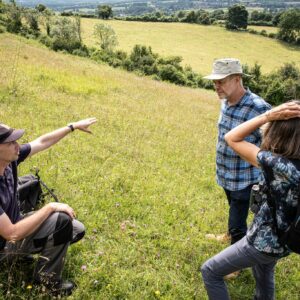
The revitalised chalk grasslands now support an array of rare plant species, including Kentish milkwort, man orchid, musk orchid, dodder, dropwort, and juniper. These plants provide essential habitats and food sources for numerous invertebrates. Notably, at least 24 species of butterflies have been recorded in these areas, such as the dingy skipper, grizzled skipper, and dark green fritillary.
Th DVLPS project has supported biodiversity in a sustainable and long term way. The partnership has ensured the valley remains a haven for wildlife and a place where future generations can experience nature in all its beauty.
Celebrating the valley’s cultural heritage
While the Darent Valley is celebrated for its natural beauty, it also holds a deep and layered history stretching back centuries. Through the Darent Valley Landscape Partnership Scheme (DVLPS), many of the valley’s most important heritage sites have been protected, restored, and brought back into public awareness ensuring the cultural stories of this unique landscape are not lost over time.
At Lullingstone Castle, a historic estate near Eynsford, the DVLPS supported efforts to preserve key features such as the 18th-century icehouse and bath house, both of which had suffered from years of decline. These buildings were stabilised and conserved to prevent further deterioration. New interpretation panels were installed to share their historical importance, and access to the former pleasure gardens was improved to help visitors better connect with the site’s rich past.
The Dartford Powder Mills, once one of the most significant centres of gunpowder production in Britain during the 18th century, were also a focus of the project. The DVLPS carried out research into the site’s industrial history, stabilised remaining mill structures, and created engaging interpretation materials. These efforts helped bring the site’s explosive past to life for modern visitors and made a lesser-known part of Britain’s industrial heritage more visible and accessible.
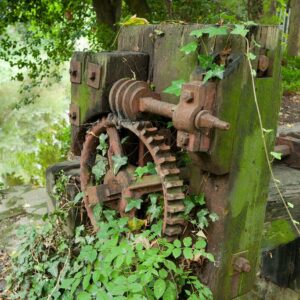
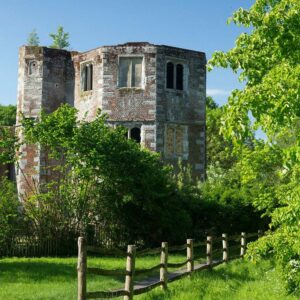
Another major achievement of the project was the conservation of the Archbishop’s Palace in Otford. Once a grand residence that rivalled Hampton Court, the remains of the palace had fallen into serious disrepair and was listed on the Heritage at Risk register. Working in partnership with the Archbishop’s Palace Conservation Trust, the DVLPS funded restoration of the north-west tower — a key step in removing the site from the at-risk list. Alongside the physical restoration, the project encouraged public involvement through community archaeology, school workshops, celebration events, and volunteer-led surveys, which uncovered new insights into the site’s layout and historical use.
Beyond physical restoration, the DVLPS emphasized making history accessible and engaging for the community. Over 50 public talks, family days, walks, and workshops were delivered, encouraging learning and appreciation of the valley’s heritage. These activities not only educated participants but also fostered a stronger connection to the local environment and history.
Creating a stronger connection between people and place
Putting people at the heart of the landscape was a key aim of the Darent Valley Landscape Partnership Scheme. From the beginning, residents, schools and community groups were invited to get involved in shaping the valley’s future. More than 4,000 people took part in guided walks, art workshops, storytelling events, wildlife surveys and exhibitions that helped deepen their connection to the place they call home.
One of the most meaningful projects was a series of nature retreats for NHS staff from nearby hospitals and care settings, who had experienced the extreme challenges of the Covid-19 epidemic. These took place at the Quadrangle in partnership with North Kent Mind and the NHS Wellbeing Team. The retreats offered a calm space for those under daily pressure to slow down and recharge. Staff spent time outdoors, reconnecting with nature, learning about local wildlife, sharing experiences and enjoying the quiet beauty of the landscape. The DVLPS truly embraced the idea of nature as a healing force, helping to foster a sense of well-being and connection for all who took part.

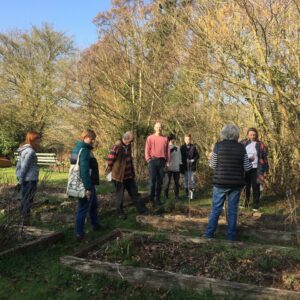
Young people were a big part of the project too. Pupils from schools including Horton Kirby Primary, Shoreham Village School and Dartford Grammar for Girls explored the valley through creative workshops, outdoor learning and archaeological digs. They made artwork inspired by the chalk landscape, uncovered fragments of medieval pottery and discovered the valley’s stories first-hand. These experiences gave children a stronger link to their local history and a new sense of pride in the place they are growing up in.
Community groups such as the Darent Valley Youth Panel, Otford Heritage Centre volunteers and the Shoreham Society helped lead the way. They organised events, shared local knowledge and got involved in conservation work. Their time, energy and commitment made sure the project reflected the voices and values of local people.
The DVLPS has created lasting relationships between people and place. By working together with those who live in and care for the valley, the partnership has helped build a sense of belonging and shared responsibility that will continue into the future.
Bringing art and creativity to the forefront
The Darent Valley has long been a source of inspiration for artists, particularly the renowned Victorian painter Samuel Palmer, who is celebrated for his visionary landscapes that captured the essence of rural life in the 19th century. Known for his connection to the valley, Palmer’s works are deeply infused with the beauty of its rolling hills, wooded valleys, and serene countryside. The Darent Valley Landscape Partnership Scheme (DVLPS) ensured this rich artistic legacy was celebrated and continued by offering creative opportunities for both locals and visitors.
The creation of the Samuel Palmer Trail allowed people to explore the valley through the eyes of one of its most famous artists. The trail guides visitors to locations that were central to Palmer’s works, such as Wrotham Hill, Lullingstone Castle, and Eynsford, giving them the chance to experience the landscape as he did. This trail provides an immersive experience that deepens people’s appreciation of the valley.
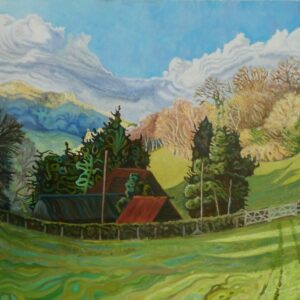
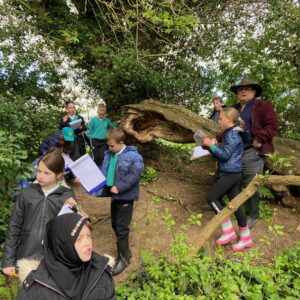
In addition to the trail, the Samuel Palmer Art Exhibition at the Kaleidoscope Gallery in Sevenoaks and the Sir Peter Black Gallery in Dartford brought together works from both the past and present.
The exhibition included high quality prints of Palmer’s most important works alongside work from artists living in the local area such as Nicola Claxton, Neil Powell, and Kit Boyd as well as artwork by local school children. These contemporary artists brought new perspectives to Palmer’s work and can still be viewed through the online catalogue.
The Samuel Palmer Art Exhibition: Online catalogue – Darent Valley Landscape Partnership Scheme
A virtual reality film made by Fiona McDonald from Feral Practice with sounds recorded from the Darent Valley from Paul Cheese of Relium X Records made the exhibition a truly immersive experience.
Another lasting legacy of the DVLPS’s focus on art is Ripple, a beautifully carved bench made from a 150-year-old fallen oak tree in Lullingstone Country Park. Its wave-like design and poetic inscription reflect the valley’s natural flow and artistic spirit. The project also included poetry workshops, led by Charles Bell, at Shoreham Village School and St John’s Primary School in Sevenoaks. Ripple was unveiled at a special event attended by residents, with children sharing their personal poems. Since then, it has become a much-loved feature in the landscape, offering visitors not only a place to rest but also a point of connection to the valley’s artistic and natural heritage.
Exploring the hidden past through archaeology
The Darent Valley Landscape Partnership Scheme (DVLPS) has played a pivotal role in uncovering the valley’s lesser-known history through community archaeology projects. Notable sites such as Lullingstone Roman Villa, Lullingstone Castle and St John’s Jerusalem have been focal points of these endeavors.
At Lullingstone Roman Villa, excavations have revealed significant findings, including a previously unknown Early Roman or Late Iron Age enclosure ditch. This discovery has provided valuable insights into the layout and development of the villa complex, which dates from approximately 75 AD and was in use until around 420 AD. The villa features rich mosaic-tiled floors, a granary, shrine, kitchen, and mausoleum, with northern rooms converted into a Christian chapel around 360 AD.
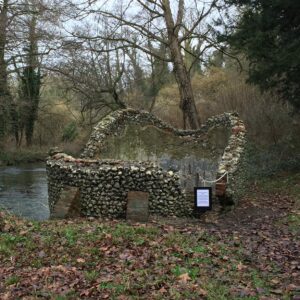
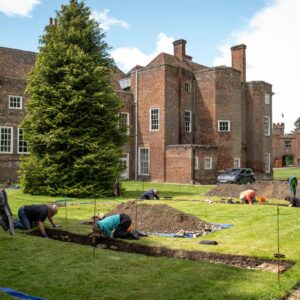
St John’s Jerusalem, located at Sutton-at-Hone near Dartford, was originally constructed as a monastery belonging to the Knights Hospitaller of the Order of Saint John of Jerusalem. Established in 1199, it served as a commandry – a regional headquarters for the order – until the Dissolution of the Monasteries in the 16th century. Archaeological investigations at this site have uncovered medieval features, enhancing our understanding of its historical significance.
These archaeological projects have not only advanced historical knowledge but also fostered community engagement. Residents, volunteers, and schoolchildren from the Darent Valley area have actively participated in digs, contributing to the unearthing of the valley’s past. Their involvement has been instrumental in making these discoveries more meaningful and ensuring a shared connection to the region’s heritage.
Making the valley more accessible for all
One of the key goals of the Darent Valley Landscape Partnership Scheme (DVLPS) was to make the valley more accessible to a wider range of visitors while promoting sustainable tourism. To achieve this, over £300,000 was invested in improving footpaths and making key sites more easily accessible.
The Darent Valley Trails App, available for free on the App Store and Google Play, features the Samuel Palmer Trail, 17 Rail Trails, and the Darent Valley Community Trails. This app enables walkers to explore the landscapes and heritage of the Darent Valley, offering live position tracking on the map (signal dependent), audio clips, uploaded images, and route directions.
Designed for use without a mobile signal, the trails can be downloaded via the app before starting the walk. The Rail Trails have proved particularly popular, with 17 trails, some linear, some circular, and of varying lengths, all starting and finishing at local Darent Valley train stations. This makes it easy for those using public transport to explore the valley’s beautiful countryside and villages.
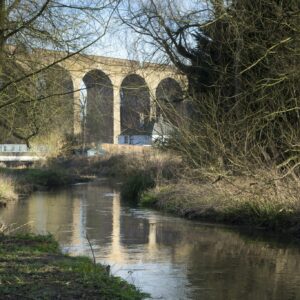

Additionally, 10 new Community Trails have been developed, each a self-guided walking route designed by residents who shared their favourite places and stories. These trails offer an authentic, community-driven experience, inviting visitors to connect with the valley’s culture, history, and landscape in a unique way.
This combination of improved infrastructure and transportation options helps make the valley a more accessible destination for everyone.
The ongoing legacy
As the DVLPS draws to a close, its legacy is far from over. The restoration of wildlife habitats, the conservation of historical sites, and the creation of lasting community partnerships have all laid the foundation for a bright future for the Darent Valley. The Darent Valley Landscape Partnership Scheme Legacy Group will continue to oversee the ongoing conservation and community engagement efforts, ensuring that the valley remains a place of natural beauty and cultural significance for generations to come.
The DVLPS has shown that when communities come together to care for the landscape, the results can be extraordinary. It has not only enhanced the valley’s natural and cultural heritage but has also deepened the connection between people and place. As we look to the future, the Darent Valley will continue to inspire, educate, and provide sanctuary for both people and wildlife.
The project was made possible thanks to funding from The National Lottery Heritage Fund, European Interreg Experience project, and support from a wide range of local partners. Thanks to National Lottery players the Darent Valley has a bright future for both people and nature.
Popular articles
The Best Viewpoints in the Kent Downs
Searching for incredible views? Look no further! We've rounded up the best…
Top 5 bluebell walks in the Kent Downs
If you're looking for inspiration on the best places for some bluebell…
Lambing season in the Kent Downs
Discover the importance of lambing season in the Kent Downs and find…
